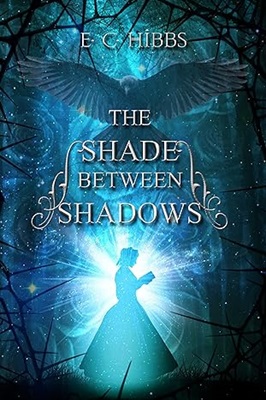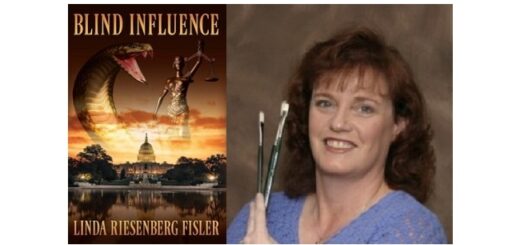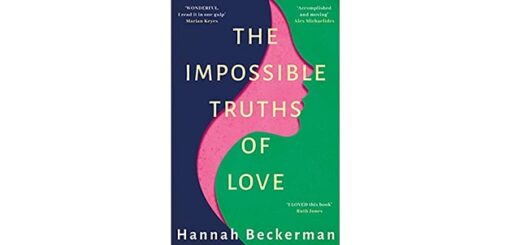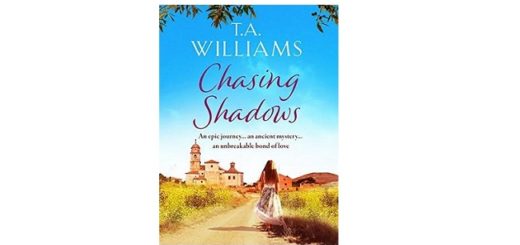Corsets Aren’t That Bad! by E. C. Hibbs – Guest Post
Corsets Aren’t That Bad! by E. C. Hibbs – Guest Post
Today on the blog we welcome author E. C. Hibbs with her guest post ‘Corsets Aren’t That Bad! Walking in Victorian Footsteps’. Check out her post below and her new book ‘The Shade Between Shadows‘ which will be released on the 9th April 2024. This post contains affiliate links.
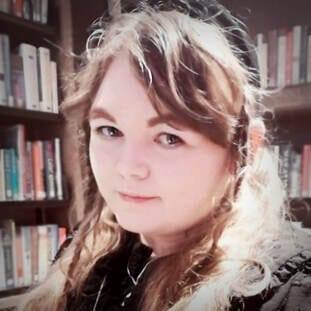
E. C. Hibbs is an award-winning author and artist, often found lost in the woods or in her own imagination. Her writing has been featured in the British Fantasy Society Journal, and she has provided artworks in various mediums for clients across the world. She is also a calligrapher and live storyteller, with a penchant for fairy tales and legends. She adores nature, fantasy, history, and anything to do with winter. She lives with her family in Cheshire, England.
Corsets Aren’t That Bad! Walking in Victorian Footsteps
From day one of planning The Shade Between Shadows, I realised it needed to be set in the early Victorian period – specifically the late 1830s. It was important that the story take place while the United Kingdom was young, with the Napoleonic Wars within living memory, and when Queen Victoria was still finding her feet. Although most of the story occurs in Nightland, it’s still connected to Britain, particularly London, Liverpool and Chester.
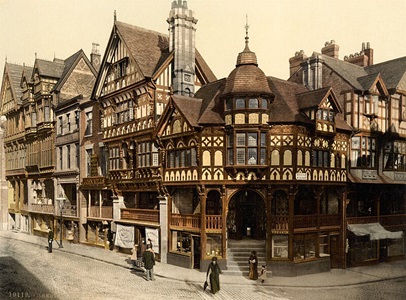
Victorian Chester
That prospect thrilled me and terrified me at the same time. I absolutely adore researching my stories – to an excessive degree. I typically spend years preparing: reading, learning new skills, speaking to people, and visiting places. I feel doing that gives me more confidence, not only in the content, but also in my writing voice.
My nervousness came from tying The Shade Between Shadows to real historical figures and events. The more I refer to those, the more pressure I feel to get things as accurate as possible. I believe I owe it, not only to readers and fellow history buffs, but also to the real people who lived it.
Of course, the novel isn’t meant to be a textbook. It is historical fantasy, told through a lens of fairy tales. But that doesn’t lessen the importance of getting the textures right.
I started with loads of history books and sources, not just about the 1830s, but the periods before them, so I could understand how things happened the way they did. I re-read 18th and 19th century literature to get a feel for the language – particularly Jane Eyre, as that was a cornerstone for the story itself. I combed through Queen Victoria’s journals – and even found an invaluable contemporary description of Chester in her own words!
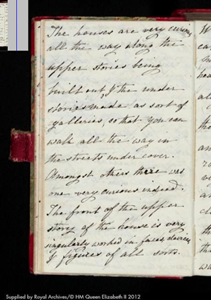
Queen Victoria’s Journal, 1832. Royal Archives.
Another exciting challenge was exploring underrepresentation in Victorian history. A reality doesn’t cease to be, simply because the terminology to recognise it doesn’t exist yet. Namely, my protagonist, Beatrice, is a neurodivergent woman, in a time when her differences would have led to society either doubting her, or ignoring her completely.
A way to begin, at least, was to experience it, as much as I could. I’m neurodivergent myself, so if I was thrown back in time, how would it feel to me?
I am effectively surrounded by history every day. I’ve written historical fiction before, but I’ve also worked in the heritage sector for several years, and due to my family being involved with antiques, my house is like a museum. I inspected everything as though I was seeing it through Beatrice’s eyes. I recalled my childhood memories of Georgian and Victorian houses, from the grand rooms to the servants’ passages. I compared the streets of modern London, Liverpool and Chester to how they would have looked 200 years ago. I travelled to the beautifully-preserved Haworth in Bronte Country, and Blists Hill Victorian Town in Ironbridge (where I was mistaken for a staff member!).
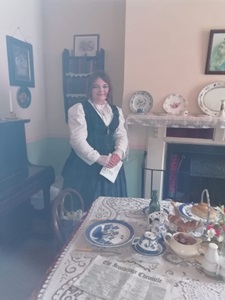
Blists Hill living room.
To create Thornvale Castle, I visited numerous stately homes and manors, including Chatsworth, Longleat and Speke Hall. I made gruel, rubbed lard on my hands for moisturiser, worked by candlelight, examined period garments and headwear, and tried out 1830s hairstyles (learning in the process that my hair does not take kindly to rag curls!)
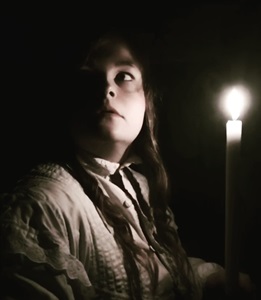
Candlelight
I also got into the habit of wearing a corset, in the same way as they were worn historically, i.e. with chemise and petticoats. Something I was determined to keep out of the story was the misconception that corsets are restrictive and uncomfortable. Believe me, I’ve had shoes which are worse than a corset! Worn correctly, I found corsets to not only be extremely supportive, but also rather comforting, like a constant hug. That was something I immediately incorporated into the story. I sensed that Beatrice would feel relief in wearing her corset, not the restraint which is commonly associated with them nowadays. I actually found the corsets so comfortable, I still wear them.
I feel the little details like that are the key to writing any historical period. Spouting names and dates will only bring you so far into the past, as will throwing in descriptions without thought of why they are important to begin with. But what are the textures which unite everything? What does a corset feel like? What do tallow candles smell like? How does it taste, to brush your teeth with charcoal? How does the light fall on a 200 year-old floor?
Questions like this are another reason why I wanted to use the Victorian period. It was a different way of living, but we can still see its influence everywhere, from giant buildings to tiny antique chambersticks. It was advanced in some ways and backwards in others. It has a legacy which is both wonderful and awful. The impacts of its arts and technology are very much alive. For as much as we romanticise it, it feels like a long time ago, but it really wasn’t.
It doesn’t take much to walk in Victorian footsteps. Just like with any time period, you just need to find the humanity, because that will always be familiar, even if everything else is like another world.
The Nightland Quartet Book One
Pages – 317
Release Date – 9th April 2024
Format – ebook

I didn’t think myself truly silent. I possessed a voice, as sure as any other. It was simply not the same as any other I had met.
The year is 1838. Queen Victoria has ascended the throne. And within the United Kingdom lies Nightland: a sprawling forest filled with darkness and danger.
Beatrice has always been different. She has not spoken since childhood, communicates through drawings, and hates to be touched. And she is a grey: half-English and half-Nightlander.
When she is forced into servitude across the border, she hatches a plan to escape with siblings Anselm and Gretchen. But gaining her freedom will be no simple task, for first, she must unravel the secrets of her master, Prince Edward. A man rumoured to have murdered his wife — and who shares Beatrice’s ability to see people’s souls.
Purchase Online From:
Author Links
Goodreads
Website
Virtual Release Party
There will be a virtual release party on Facebook and open to everyone, anywhere in the world. It will begin on Saturday 13th April and will run from 7pm-1am BST or 3pm-9pm EST. Also featured will be special guests Samantha Shaye and Sai Marie Johnson, who will each take over for 1 hour.
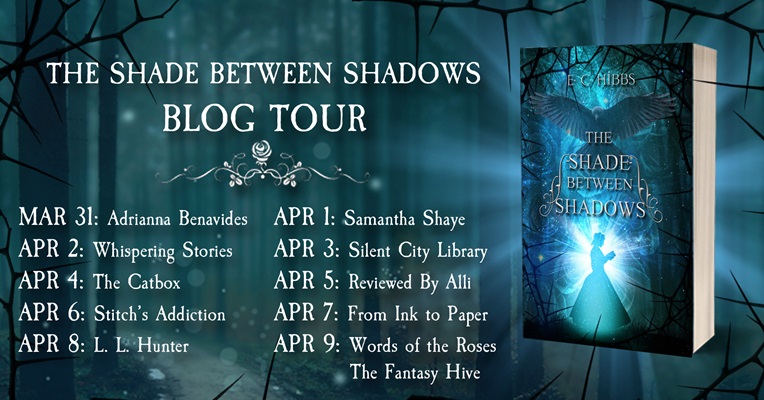
Blists Hill living room. E. C. Hibbs.
Candlelight. E. C. Hibbs
Queen Victoria’s Journal, 1832. Royal Archives.
Victorian Chester. Public domain


